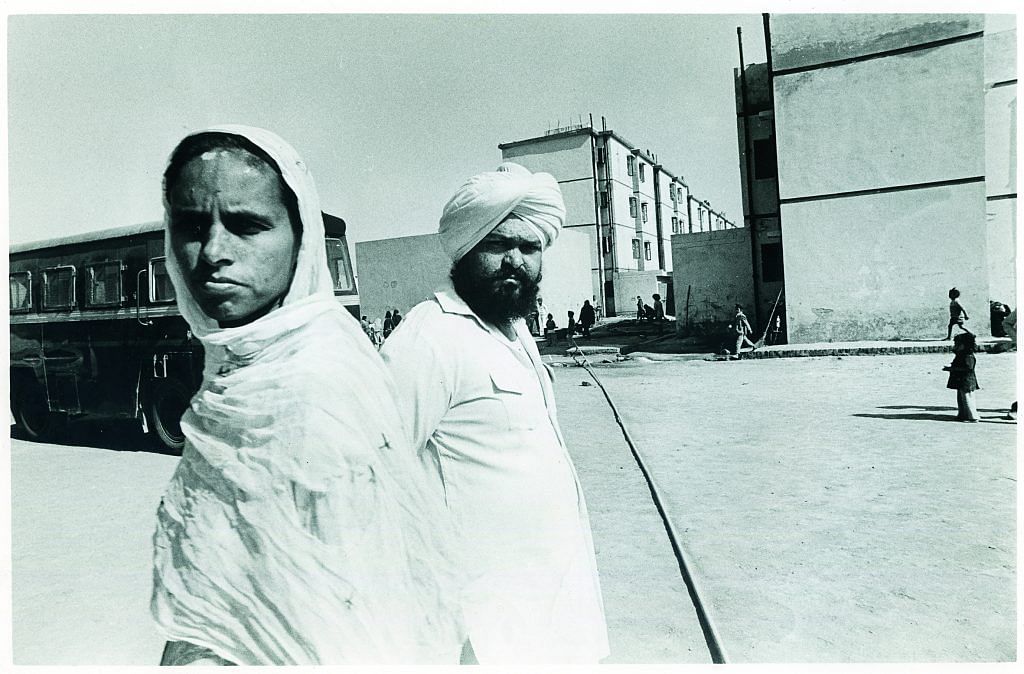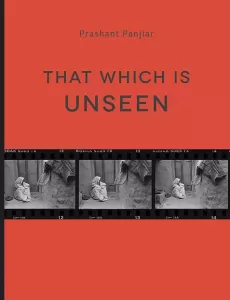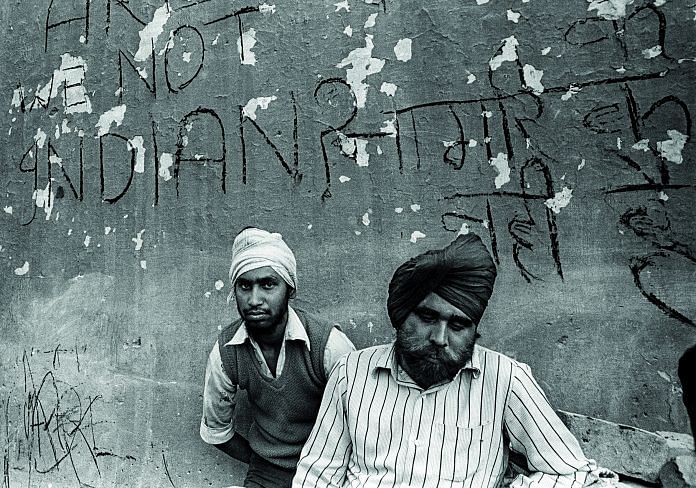Prime Minister Indira Gandhi’s assassination on 31 October 1984 and the anti-Sikh riots that followed was probably a turning point for photojournalists in general and for me personally. Before 1984, we photojournalists had to only watch out for the cops who were inclined to thrash us and smash our cameras, but now there were violent mobs that were an even greater threat. And it has been like that ever since. In any riot, demonstration or situation of strife, photojournalists are the first targets, always under attack from both sides!
During the 1984 riots, we photojournalists found ourselves completely helpless. The police had either conveniently disappeared or actively aided the bloodthirsty mobs organized by some of the ruling Congress party leaders. The killers that ruled the streets were trying to make sure that there was no photographic evidence of their violence. The few images we managed were shoot-and-scoot photos taken from a distance. One very shaken-up newspaper photographer recounted an incident where he was stopped by a mob that took petrol out of his scooter and burnt a Sikh man right in front of him while threatening him with the same consequence if he even dared pick up his camera. This is why there are so few images of the actual violence in 1984 that exist. The same pattern has been repeated in riot after riot since then.

During the 1984 riots, I began taking an active part in planning Patriot’s photo coverage. As the mobs receded, and the Army regained control, we decided to be more pro-active, zipping around on our scooters, scouring the city for stories. We visited riot-torn areas, brought back images of the aftermath and the survivors, like the ones I made in refugee camps that you see here. Our pictures obviously dominated the front page, but we also ran a photo-feature on the back page everyday for almost three weeks. Pavement newspaper hawkers would display our newspaper open front and back and charge a premium for it!
The 1984 riots ended my years of working freelance, as Patriot now asked me to join them full-time.
As per official figures, of the 3500 Sikhs massacred in India during the anti-Sikh riots, 2,800 were in Delhi alone. However, independent sources estimate the deaths to range anywhere between 8,000 and 17,000. The violence also displaced at least 50,000 Sikhs.
 This excerpt from ‘That which is unseen’ by Prashant Panjiar has been published with permission from Navajivan Trust.
This excerpt from ‘That which is unseen’ by Prashant Panjiar has been published with permission from Navajivan Trust.
Also Read: Ram-Ram Chhodo, Jai Shri Ram Bolo: How Ayodhya erased Sita



